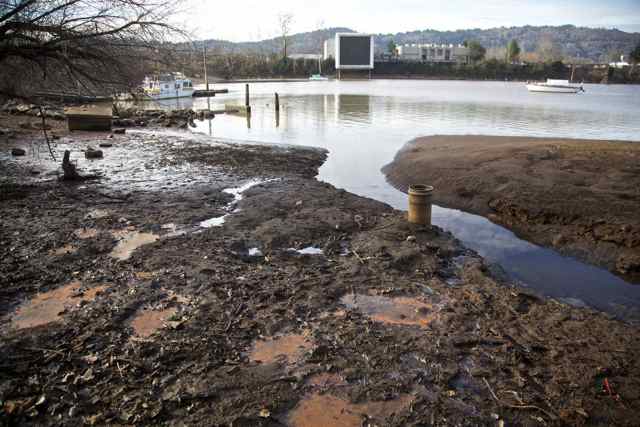forum
library
tutorial
contact

Do Superfund Cleanup Right
Travis WilliamsPortland Tribune, October 27, 2015
|
the film forum library tutorial contact |

|
Do Superfund Cleanup RightTravis WilliamsPortland Tribune, October 27, 2015 |
Citizens must be vigilant to ensure Willamette River contaminants are removed correctly
 Over many decades, a stretch of the Willamette River from the Fremont Bridge to near the Columbia River has been heavily polluted. Mixed into the river sediments over the years, contaminants such as PCBs, heavy metals, oil-based pollutants, and even the breakdown products of DDT are found in this area.
Over many decades, a stretch of the Willamette River from the Fremont Bridge to near the Columbia River has been heavily polluted. Mixed into the river sediments over the years, contaminants such as PCBs, heavy metals, oil-based pollutants, and even the breakdown products of DDT are found in this area.
The pollution is on the river bottom, typically near the shore, and in riverside lands as well. Most of this pollution is linked to activity on riverside lands, from manufacturing to ship dismantling.
Because of the high levels of pollution, since 2000 the area has been designated as a federal Superfund site, which has enabled the U.S. Environmental Protection Agency to work with local businesses, as well as the city of Portland and the Port of Portland -- all of them having some liability for the cleanup.
Superfund is a "polluter pays" law, meaning those responsible or who hold some liability (such as owning polluted land) are responsible for making it right.
The need here is to reduce the risk from the pollutants. Some of these pollutants can move into the food chain, from the smallest critters on the river bottom to fish, birds and people. This can increase the risk of cancer and other health impacts to people. The pollution also can have a negative impact on wildlife.
Given the level of pollution in the area, the best way to reduce risk to people over the long haul is by removing the contaminated sediment from the river. This is done by dredging the sediment off the river bottom.
Some responsible for the cleanup have proposed half measures that provide much less protection for people, and river wildlife -- such as leaving the sediment in place, and letting the natural river sediments cover it up over time. This is not a preferred way to reduce risk to the community. Many community members already have made it clear that they want as much sediment as possible removed from the river.
In the coming months (early 2016), the EPA will issue a Draft Cleanup Plan that will define their proposed approach, from dredging to covering the pollution and leaving it in place.
A huge consideration for the EPA is community acceptance of the cleanup plan. When the plan is issued, you will have an opportunity to weigh in. The EPA will accept public comment as part of the official record once the draft plan is released. Later in the year, they will issue the final Record of Decision, which is the official cleanup plan.
From there it is up to those responsible for the cleanup to get to action. The hope is that these entities will not take legal measures to fight their responsibility, but instead will get to work. There is a community responsibility that must be met by those who are liable for the cleanup.
A cleaner river in this area will benefit Portland and all who use the river in multiple ways. In fact, by investing in this cleanup, the local economy will benefit over time. Let's get this cleanup moving forward, and let's do it right.
Related Sites:
Willamette River Keeper
Portland Harbor Community
Portland Harbor site U.S. EPA Region 10
learn more on topics covered in the film
see the video
read the script
learn the songs
discussion forum
